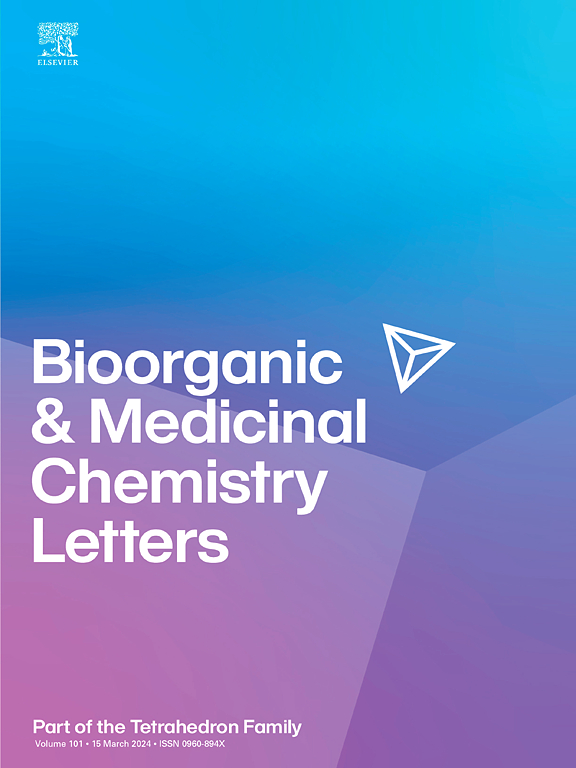1,3,4-恶二唑基EGFR抑制剂的设计、合成和评价。
IF 2.2
4区 医学
Q3 CHEMISTRY, MEDICINAL
引用次数: 0
摘要
表皮生长因子受体(EGFR)是酪氨酸激酶受体(RTK)家族的一员,是多种癌症的有效治疗靶点。EGFR抑制剂显著改善了EGFR阳性肿瘤患者的治疗效果。EGFRT790M突变已成为第一代和第二代EGFR抑制剂临床获得性耐药的主要原因。在这项研究中,我们将唑类,特别是1,3,4-恶二唑类,整合到一个首选的喹唑啉支架中,以设计新的EGFR抑制剂。化合物4 b, 1, 3, 4-oxadiazole-based表皮生长因子受体抑制剂,展示了卓越的效能与EGFRL858R / T790M突变(IC50 = 17.18 埃罗替尼 相比733.20 nM)和NCI-H1975细胞(IC50 = 2.17±0.20 11.01μM相比 ±0.05 μM埃罗替尼)。此外,4b显著抑制了A431和NCI-H1975细胞的迁移,并诱导NCI-H1975细胞G1期周期阻滞。总之,这些发现表明,4b是开发靶向EGFRL858R/T790M突变抑制剂的有希望的先导化合物。本文章由计算机程序翻译,如有差异,请以英文原文为准。

Design, synthesis, and evaluation of 1,3,4-oxadiazole-based EGFR inhibitors
The epidermal growth factor receptor (EGFR), a member of the receptor tyrosine kinase (RTK) family, serves as a validated and significant therapeutic target in various cancers. EGFR inhibitors have substantially improved the treatment outcomes for patients with EGFR-positive tumors. The EGFRT790M mutation has emerged as a leading cause of clinically acquired resistance to both first- and second-generation EGFR inhibitors. In this study, we integrated azoles, particularly 1,3,4-oxadiazoles, into a preferred quinazoline scaffold to design novel EGFR inhibitors. Compound 4b, a new 1,3,4-oxadiazole-based EGFR inhibitor, demonstrated superior potency against the EGFRL858R/T790M mutant (IC50 = 17.18 nM compared to 733.20 nM for Erlotinib) and in NCI-H1975 cells (IC50 = 2.17 ± 0.20 μM compared to 11.01 ± 0.05 μM for Erlotinib). Furthermore, 4b significantly inhibited the migration of both A431 and NCI-H1975 cells and induced G1 phase cell cycle arrest in NCI-H1975 cells. In conclusion, these findings suggest that 4b is a promising lead compound for the development of inhibitors targeting the EGFRL858R/T790M mutation.
求助全文
通过发布文献求助,成功后即可免费获取论文全文。
去求助
来源期刊
CiteScore
5.70
自引率
3.70%
发文量
463
审稿时长
27 days
期刊介绍:
Bioorganic & Medicinal Chemistry Letters presents preliminary experimental or theoretical research results of outstanding significance and timeliness on all aspects of science at the interface of chemistry and biology and on major advances in drug design and development. The journal publishes articles in the form of communications reporting experimental or theoretical results of special interest, and strives to provide maximum dissemination to a large, international audience.

 求助内容:
求助内容: 应助结果提醒方式:
应助结果提醒方式:


